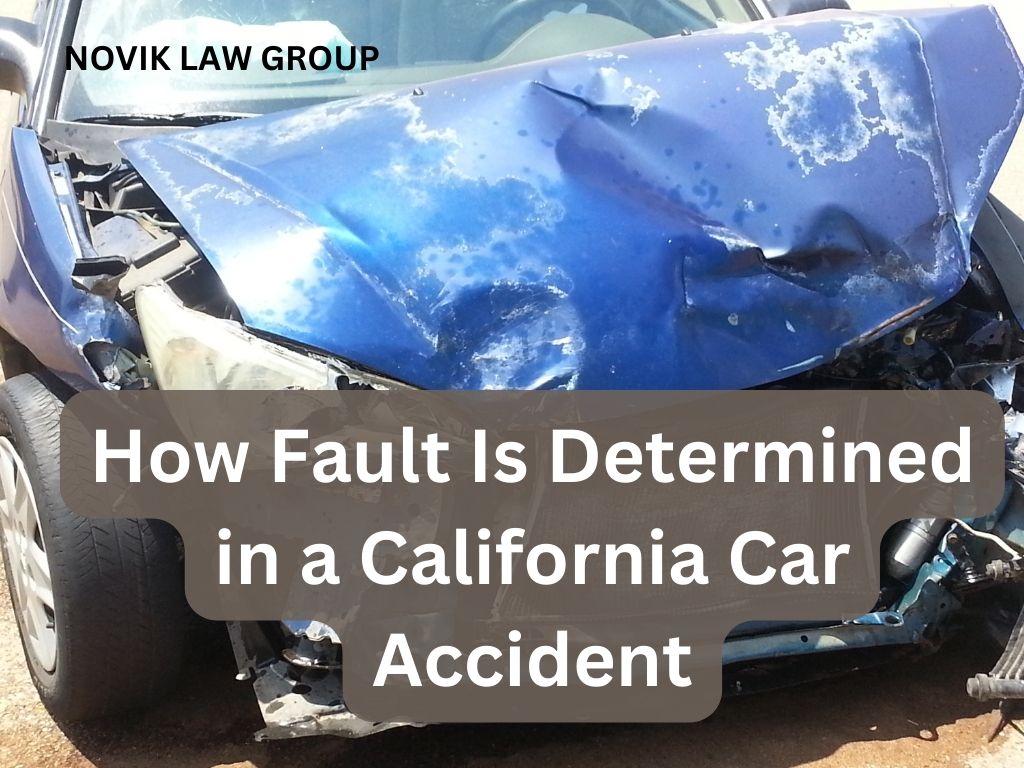Understanding California’s Comparative Negligence Law in Auto Accidents
Comparative negligence cases in California are rarely straightforward. The state’s comparative fault laws allow each person’s fault to be evaluated and assigned a percentage of blame. If someone sues for damages but was partly responsible for a car accident, their award is reduced by the percentage to which they are found at fault. Even when fault is not clear-cut, it gives drivers a chance to seek a percentage of fair compensation when they share some of the responsibility. Our experienced Encino car accident attorneys at Novik Law Group understand California comparative negligence law, and they know how to push back against inflated fault percentages, ensuring your side of the story is fully represented.
What Is Comparative Negligence?
Comparative negligence determines liability when more than one person is at fault due to a car accident. The court looks at each person’s actions and assigns fault. If you’re partially responsible, you can still receive compensation, but it could be reduced based on what the court decides your portion of fault is. Comparative liability ensures compensation is fairly adjusted, based on how much each person contributed to the harm.
How Comparative Fault Works in California
California uses a comparative fault system, and it applies to car accident cases, personal injury claims, and slip-and-fall cases. California courts determine whether each person acted reasonably under the specific circumstances. If more than one person is to blame, it allows each person partial recovery of losses. The court assigns each involved party a percentage of fault and a payout based on their level of shared responsibility, creating an equitable outcome for all involved.
Real-World Examples of Comparative Negligence in Auto Accidents
If a driver runs a red light and crashes into another vehicle that was speeding through the intersection, and both parties are found to have contributed to the crash, the court might find the red-light runner 60% at fault and the speeding driver 40% at fault. If the speeding driver suffered $50,000 in damages, they could still recover 40% of the amount. Comparative negligence allows both injured parties to seek partial compensation.
How Comparative Fault Affects Your Insurance Claim
If you’re involved in a car accident in California, comparative fault can have an impact on how much your insurance pays or how much compensation you receive from the other person’s insurance company. Your compensation will be reduced by the percentage of fault assigned to you. Insurance adjusters use this to negotiate settlements, relying on police reports, witness statements, and your own words to assign blame.
Why You Need a Lawyer in a Comparative Negligence Case
A skilled personal injury attorney in LA who represents you can be the difference between a fair recovery and a drastically reduced payout. It’s not uncommon for insurance companies to attempt to shift blame to the injured party to reduce their amount of financial responsibility. Erick Novik and his legal team are experts in comparative negligence law. They gather valuable evidence, consult with experts, and know how to fight insurance tactics designed to reduce your claim. They build strong cases to minimize your assigned fault while maximizing your compensation. Your settlement won’t reflect the actual impact of your injuries, if you don’t have experienced legal representation who fights for you. Novik Law Group can provide you with a powerful advantage as your trusted advocate in negotiations and litigation.

NO UP-FRONT COSTS!
If you think hiring an attorney is too expensive, think again! By following our legal advice, our clients pay zero fees and have zero out-of-pocket costs until we win or settle their case. Guaranteed.


